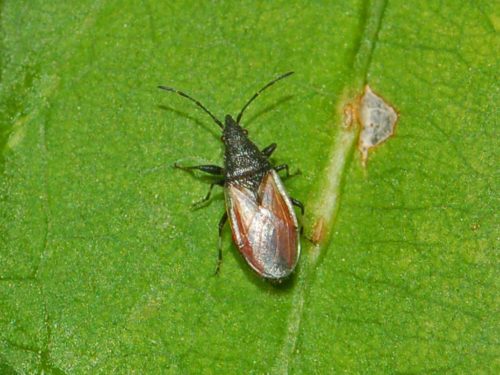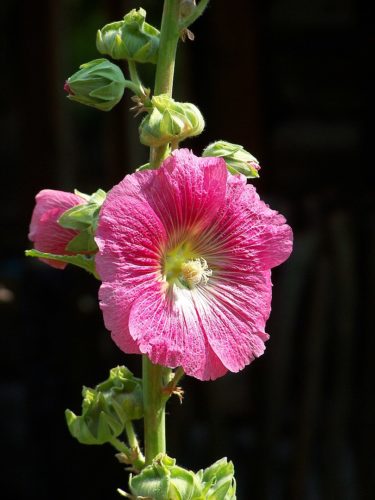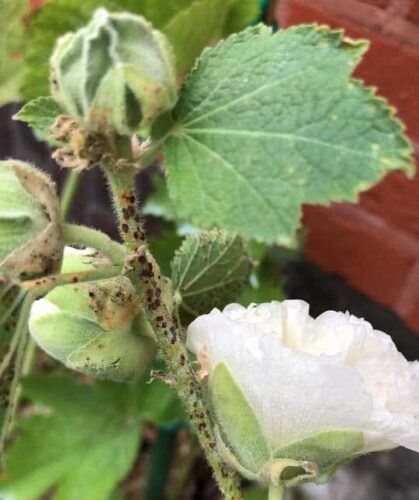Hollyhock, biennial plant belonging to the mallows.
Also known as:
Althea Ro
Ro
You are viewing the mobile-adapted version of the page.
The one for tablets, laptop and desktop also provides general information, such as origin, toxicity and cultivation.
Hollyhock – (Althaea rosea), biennial plant belonging to the mallows (Malvaceae). Originates from the southern regions of Turkey and was imported to Europe by merchants in the sixteenth century. The plant can grow up to three and a half meters in height.
The hollyhock likes a sunny spot in a sheltered location in not too heavy soil. Avoid too moist a location as rust will quickly occur. Hollyhocks with dark-colored flowers also thrive in sandy soils. In dry weather, water early or the flowers will dry out.
Hollyhocks self-seed easily.
Bugs

Chlorophyl is eaten away: Lime seed bug (Oxycarenus lavaterae).

Black-rimmed holes and spots develop on the leaf: Hollyhock weevil (Rhopalapion longirostre)
Other
Due to the length of the plant, the hollyhock can break, so a sheltered location is recommended. A stake to which the hollyhock is attached helps prevent the plant from breaking and falling over.


